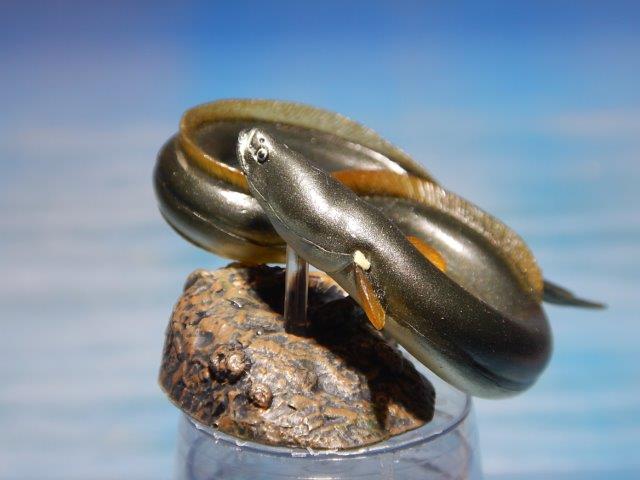

This figure is the Japanese eel (nihon unagi in Japan), Anguilla japonica, model sculpt 23 and number 8 from the second series. This is the only freshwater eel found in Japan, although it is found throughout Eastern Asia as far south as Vietnam. Like many other freshwater eels, the Japanese Eel is catadromous, spawning and hatching at sea but living much of their life in freshwater habitats and brackish estuaries. They are predatory animals, eating fish and invertebrates, and possibly fish eggs as well. Japanese eels can change morphology considerably depending where they are in their life cycle; some never enter freshwater, which results in a different colouring. They are important food fish in their native region, but unfortunately they are listed by the IUCN as Endangered (like all anguillids, AKA freshwater eels) due to fishery pressure and habitat loss. Some farm-raising is done, but they are not bred in captivity; instead juveniles are captured at sea and raised in farms, which does nothing to reduce natural population pressure. This also results in a difference in appearance as well as body shape between wild-caught and farm-raised eels. The Yujin model gives a length of 100cm, but several other online sources gave a length of 150cm.
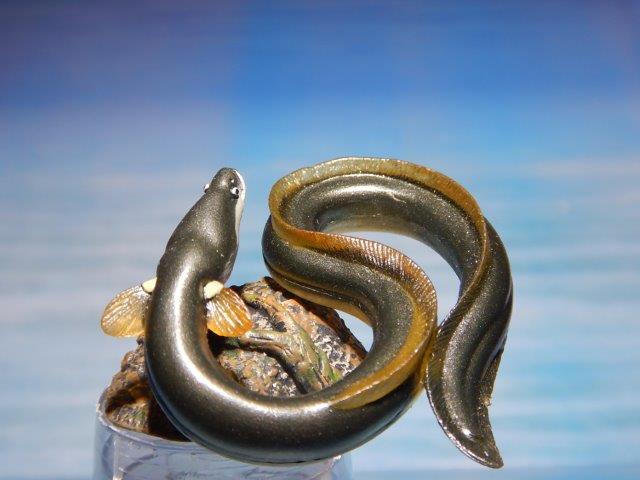
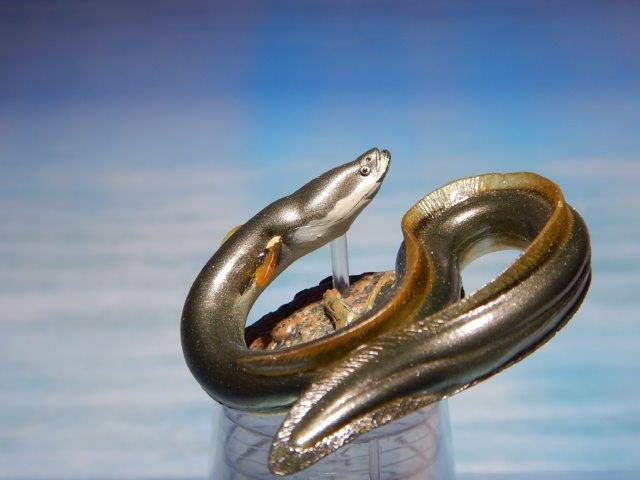
This model is difficult to measure, given its various curves, but measures 16cm long, giving a scale of 1:6; using the longer length of some sources of 150cm, the scale would be more like 1:9. This is definitely one of the most interesting models in terms of sculpt—instead of the normal more-or-less straight body, this sculpt has given the eel its full range of curves and bends, reflecting the snake-like appearance of the fish. The details are equally excellent—the fins are all a translucent yellowish colour, finely detailed with the fin rays; the single dorsal-caudal-anal wraps completely around the body as it should, following the edges of the body as it curves. The ventral fin flattens out against the body part way, reflecting the body’s weight as the fish swims around the river bottom. The main body of the fish is very dark brown on the dorsal surface, changing abruptly to silver on the ventral surface. The head is well-sculpted, and the eyes are painted well, with the light eyeball and dark pupil giving a sense of life to the fish. The base that this one is on is the mound of river bottom with branches.
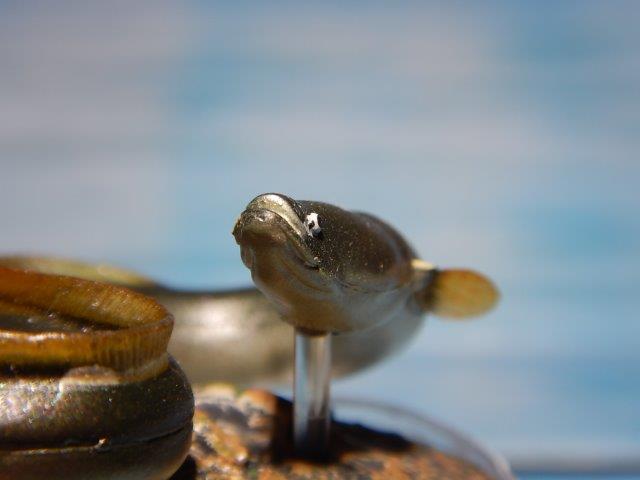
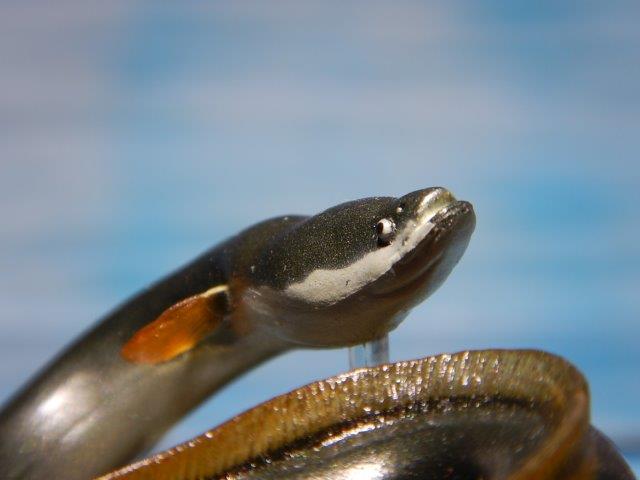
This is one of those figures where there can be marked differences from the first release (that I don’t have–yet?) to the second release (that is discussed here). The first release is more uniformly greyish, with grey fins overall. Under the chin it is also more starkly white. It would be impossible to say, but this almost looks like the difference between a farmed (the first release) and a wild-caught eel, where the latter appear to be more greenish or brownish tinged, and with more colour in the fins. Of course, the sculpt is the same, so does not represent the differences in body, although given the proportions, it seems like the original sculpt was based on a fatter farm-raised. It’s also possible that the difference is representing an oceanic adult (the darker model, the ‘silver eel’ phase) and freshwater not-quite adult (the more brown, ‘yellow eel’ phase). Or it could just be paint choices between the releases.
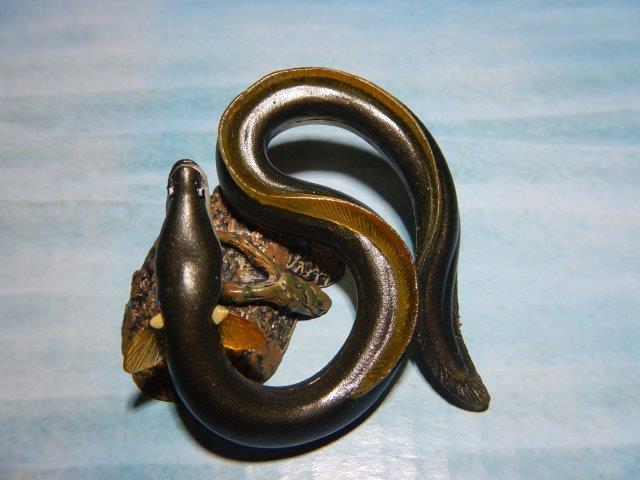
There are definitely other models of freshwater eels, but possibly only a couple others are A. japonica. Most are Japanese figures, but Bullyland has made a European freshwater eel (edit–and just this year, Safari released one in a toob as well). There is a ‘secret’ version of the Yujin, a completely yellow or gold ‘leucistic’ model, but I haven’t ever seen it available for a reasonable price. It was released as part of the box set that contained a few yellow versions of fish, plus some other exclusive secrets.

Starting on the 14th of January, 2024, I migrated my first Yujin Freshwater Fish Pictorial walkaround post from the Animal Toy Forum to this blog, with the intention of moving all species’/figures’ walkarounds here. The initial post contained a lengthy explanation of the series (both the original and updated) that I don’t think should be repeated each time! For those details, the post can be seen at the first post. Then we can just get to the fish. Most of the details and writing will come from the original post, although I may supplement/add where appropriate.
Disclaimer: links to Ebay and Amazon on the AnimalToyBlog are affiliate links, so we make a small commission if you use them. Thanks for supporting us!



